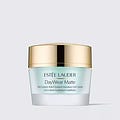Highlights
EL had its fourth quarter of year-on-year sales decline
Management blamed weak China and Korea Travel Retail
We see effects of past poor execution now turning visible
Weakness will linger, but strong brands should carry EL through
We see 41% upside (11.7% p.a.) by June 2026. Buy
Introduction
We review Estée Lauder (EL) after shares crashed 17% on Wednesday (May 3) following Q3 FY23 results. EL’s share price is now down 21% in the past year, and 45% lower than its peak in December 2021:
EL Share Price (Last 1 Year)
Source: Google Finance (03-May-23).
EL sales fell 8% organically year-on-year in Q3 FY23. This was the fourth consecutive quarter of year-on-year decline, and EL sales had fallen back to pre-COVID levels since Q4 FY22. Inventory levels were too high in CY22, and de-stocking has continued to be a headwind. FY23 guidance was cut to an organic sales decline of 5-7% and an Adjusted EPS decline of 54%. EL’s poor performance was in sharp contrast to the continuing growth at L’Oré…



